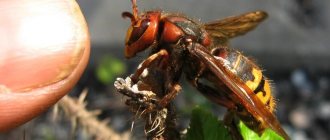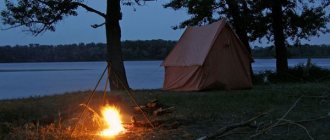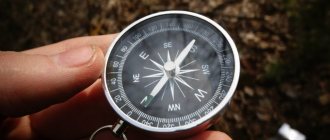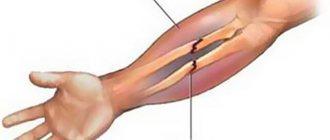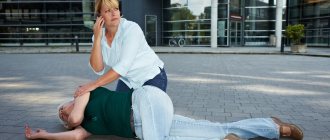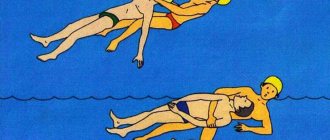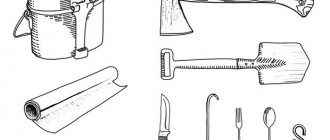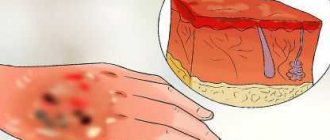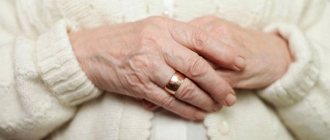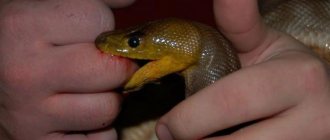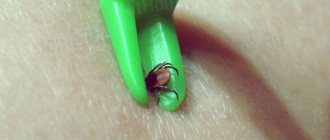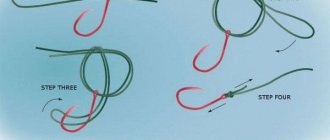Wounds and bruises
In case of wounds and associated bleeding, the main task is to stop the bleeding and protect the damaged surface from contamination. Severe bleeding, which occurs when large blood vessels are injured, can be stopped by applying a tourniquet or twist from an auxiliary material. For this purpose, you can use a belt, scarf, or piece of material. The twist must be loosely tied at the desired level to form a loop into which the stick is then inserted. Then you should rotate it, twisting it until the blood stops completely. It should be remembered that keeping the twist in one place for a long time can cause tissue necrosis and even paralysis. To avoid this, the twist must be moved (at least after an hour and a half) higher or lower if the bleeding has not stopped. For minor bleeding, it is enough to apply a pressure bandage from a piece of clean cloth, in the absence of a bandage or an individual bag. It is very important not to contaminate the wound to avoid suppuration. Do not apply earth, tree bark, or snow to the damaged surface. If there is no disinfectant solution, it is best to wash the wound with boiled water. In forest conditions, scratches and abrasions can be lubricated with liquid tree resin. For bruises accompanied by bruising, a cold compress, a pressure bandage and temporary rest are necessary.
Help for food poisoning
In the first two hours, you need to do a gastric lavage (drink a liter of boiled water), inducing vomiting. The patient should lie in a warm place. Plastic bottles are used as heating pads. Stay hydrated and drink at least 5 glasses of water per day. In addition to toxin-removing and symptom-relieving agents, rehydron powder should be given to prevent dehydration. Over the next two days, the patient should adhere to a diet of cereals and light soups.
In conclusion, it is worth saying that providing first aid in natural conditions should take place without panic. The main goal of the person providing assistance is to ensure the safety of the victim’s life until he receives specialized medical care.
Dislocations and fractures
First aid for dislocations, when the bones in the joints are displaced but not damaged, is to fix the limb and apply a cold compress. You can imagine what it will be like for the victim if they begin to set his broken leg! In the absence of suitable auxiliary material, the injured arm can be bandaged to the body, the leg to the healthy leg. You should first cover the limb with cotton wool or cloth. Good immobilization, reducing pain, serves as a prevention of traumatic shock. A small amount of alcohol, hot tea, and coffee have a beneficial effect in such a situation. The victim should be covered warmly and, if you have a first aid kit with you, give him some painkillers: analgin, amidopyrine. An extremely serious injury is a spinal fracture. Incorrectly provided assistance can be costly for the victim. To avoid this, first of all it is necessary to create peace for the victim. It is completely unacceptable to plant or put him on his feet. Transportation must be carried out with extreme care. In this case, the patient should lie on his back on a flat wooden board.
Fractures
This type of injury can be open or closed. In any case, the bone is damaged, but both types have their own characteristics.
With a closed fracture, there is no damage to the skin. It can be determined by certain signs. Most often, it becomes impossible to move the limb (not always). The arm or leg swells and turns blue. When the pelvic bones are injured, it becomes impossible to raise the leg above the surface. If you lightly tap on the limb, you will experience a painful sensation that intensifies at the site of injury. In rare cases, a fracture is mistaken for a bruise; for example, this can occur with an injury to the hand and wrist.
With an open fracture, there is damage to the outer skin. In many cases, bone fragments can be seen in the wound. Also, when you try to move a limb, you can hear a characteristic crunch.
Of particular note are fractures of the spine and ribs. If a person receives a severe chest bruise while hiking and there is a risk of a fracture, he should be taken to the hospital as quickly as possible. Immediately after the injury, a rubber bandage is applied to the sternum. The danger of such an injury lies in the possibility of damage to internal organs by fragments of the ribs. If a spinal injury is suspected, it is not recommended to move the person. This should only be done if absolutely necessary; any hard object can be used as a stretcher.
First aid for a closed fracture is to fix the limb. In this case, you need to fix the joint above the injury site and the joint below. If the lower leg is injured, it is necessary to fix three joints, completely immobilizing the leg if possible. The splint should not be applied directly to the skin; be sure to place something under it.

In case of an open fracture, the first step is to stop the bleeding. A rubber band is used for this. After applying it, remember that it should be removed for a short time every hour, this is done to avoid tissue necrosis. You should not try to set any exposed bone fragments. This may cause increased bleeding. After the bleeding has stopped, it is necessary to apply a sterile bandage and immobilize the injured limb.
Burns
There are three degrees of severity of burns. I degree is characterized by redness and soreness of the skin; at stage II, the formation of blisters is observed; With third degree burns, necrosis of all layers of the skin occurs. Burns become very life-threatening if they occupy more than one third of the total surface of the body. For first degree burns, to reduce pain, you can immerse the burned area in clean cold water, moisten it with cologne, and bandage it. It’s a good idea to place a piece of cloth soaked in alcohol on the burned area. This can prevent the formation of bubbles. It is not recommended to lubricate the burned surface with fat. When providing first aid, it is absolutely unacceptable to open blisters, touch the burned area with your hands, or pour water on it to avoid infection. Anyone who is going to the forest can be advised to purchase a film-forming drug produced by the domestic industry in an aerosol can - Lifusol, which contains the antiseptic furatsillin. When sprayed on the surface of the skin, after one to two minutes a transparent and elastic film is formed, which reliably protects the wound from infection. In this case, there is no need to apply a gauze bandage. The applied film is elastic, does not restrict movement, is not washed off with water, and, if necessary, can be easily removed with alcohol or ether. Lifusol is used for closed microtraumas, cuts, abrasions, abrasions, first and second degree burns.
Frostbite
The causes of frostbite can be different: tight, wet shoes, prolonged immobility, exposure to low air temperatures, high humidity and strong winds. Contributing factors are: alcohol intoxication, significant blood loss, general exhaustion. Most often, fingers, toes, ears, nose, and cheeks are affected by frostbite. Based on the severity and depth of the changes occurring, frostbite is divided into four degrees. First aid consists of immediately warming the frostbitten part of the body and restoring blood circulation. Rub the frostbitten area with clean hands (it is advisable to moisten them with alcohol). Rubbing is stopped when sensitivity and redness of the frostbitten surface appears. The victim should be given a hot drink. A small dose of alcohol has a beneficial effect.
First aid for frostbite
First aid for frostbite is to stop the effects of cold on the human body, warm the limbs and the whole body, and prevent stagnation of blood flow in the affected tissues . For this, a person is placed in a tent, outer clothing, shoes, and socks are removed.
It should be borne in mind that the first aid procedure depends on the degree of frostbite of the victim.
Degrees of frostbite
I degree is the mildest, as a result of short-term exposure to low temperatures. Living tissue in the affected area does not die and is initially pale in color, which then becomes reddish. The skin burns and tingles, the pain is tolerable and short-lived.
It is enough to warm the affected area by lightly rubbing it with warm hands or a woolen cloth, then apply a bandage of gauze and cotton wool.
II degree - the affected area initially loses sensitivity, but after warming up it persistently hurts and burns. After a couple of days, bubbles with clear liquid inside appear at the site of frostbite.
III degree – loss of tissue sensitivity for a long period, which is not restored immediately after heating. The result is non-healing scars, dead tissue, and lost nails.
IV degree is the most destructive for living tissues, all soft layers of which die irrevocably. Bluish swelling forms immediately after frostbite. Even joints and bones are affected.
Remember! In the last three stages, you should not rub or quickly warm the victim.
A heat-retaining bandage is applied to frostbitten skin: gauze, a double layer of cotton wool, gauze again, a layer of dense material (rubber or oilcloth). If a limb is injured, it is fixed as during standard first aid on a hike: on a plank or any dense piece, bandaged over a heat-insulating bandage. You can also insulate the top with outerwear or woolen sweaters. The victim is given water and hot food. As a pain reliever - two No-spa tablets, aspirin, analgin.
What can't you do?
- Rubbing with snow. You will cause an infection and further damage the blood vessels.
- Quickly warm the victim by the fire, using heating pads, etc. This only worsens the effects of frostbite.
- Rubbing the affected area with oil , fat, and alcohol in stages II-IV.
If the site of frostbite has lost sensitivity for a long time, then the person should be taken to a medical center as quickly as possible. This is mandatory for stages III-IV of frostbite.
Help for a drowning man
First aid is provided immediately after rescuing a drowning person from the water. Using a bandage or thin scarf, clean the mouth and nose. To remove water from the lungs and stomach, you need to place the person with his stomach on his knee so that the position of the head is lower than the chest, and make several vigorous movements, squeezing the chest. After clearing the airways of water, you should immediately begin artificial respiration. You can breathe air into the victim’s mouth through a bandage, handkerchief, etc. At the same time, you need to do an external cardiac massage by squeezing the chest over the heart area with a rhythm of 1 time per second. Artificial respiration must be continued until spontaneous breathing and heartbeat appear, and in their absence, for at least two hours. The victim must lie on a flat, hard surface.
First aid on a hike in nature
Date: June 18, 2013 · ,474
You should take only the most necessary things on a hike Depending on the duration of the hike, they can be: soap, cologne, towel, utensils for water and cooking, needle, knife, hatchet, flashlight, coil of rope, first aid kit. You can do without some of these things, but a first aid kit or a set of medications should include: antiseptic and dressing materials, iodine, potassium permanganate, streptocide and other necessary drugs.
Medicines are placed in a waterproof plastic bag. It is best to carry the necessary things in a backpack. When putting them in the backpack, the heaviest and most uneven things are placed at the bottom, soft ones are placed to the back, those that will be needed first are placed on top, sharp and cutting objects (knife, ax, etc.) should be kept in cases, and in the backpack Place it in such a way as to prevent injury from a fall. Where it is not possible or not allowed to light a fire, you can use portable stoves and gas stoves, strictly observing, of course, the rules of use.
When struck by lightning, the skin of the limbs and torso should be rubbed very vigorously; the well-injured person should be given a sniff of ammonia; if necessary, artificial respiration and cardiac massage should be performed. It is unacceptable to bury the victim or cover him with earth.
Lightning can be linear, rocket, bead, ribbon, and, finally, ball. Linear, rocket, bead, ribbon discharges are spark discharges of various shapes, and ball lightning is a fireball with a diameter of about 10 cm (at the surface of the earth). Typically, ball lightning moves slowly, silently or with a slight crackling or hissing sound. Lasts up to half a minute. It can penetrate into buildings through cracks, chimneys, and pipes. Sometimes it explodes with a deafening crash and a bright flash. Of all the trees, lightning strikes the oak most often. Out of 100 lightning strikes, oak accounts for 54 hits, poplar - 24, pine - 6, linden - 2, acacia - 1, but it is not safe to hide under any lonely tree during a thunderstorm.
The danger of a bite from a small non-venomous animal is that when bitten, an infection from decomposed food debris can enter the wound. Therefore, the bite wound must be immediately washed with any disinfectant.
If there is no source or stream nearby, but only a silted pond or swamp, you should dig a hole on its shore, gradually it will be filled with filtered water, the water must be completely scooped out 2-3 times, after which you can quench your thirst. A reliable way to disinfect water is boiling. Sometimes you can use a few drops of iodine or crystals of potassium permanganate for this purpose.
In forest and field mountain conditions, dislocations of joints, injuries, poisoning, etc. sometimes occur.
The first thing that no one is safe from in the forest is a splinter . It is removed with a needle, after wiping both the finger and the needle with cologne or alcohol. The skin around the wound is lubricated with iodine.
Small scratches and wounds are treated with iodine, bandaged with a sterile bandage, or, in extreme cases, with a clean white cloth, or, especially on the face, covered with a plaster.
Contamination of the wound, especially with soil, can lead to serious illnesses (blood poisoning, tetanus, etc.). Therefore, the first aid provider must disinfect his hands (with soap, cologne or alcohol), lubricate the skin around the wound (but not the wound itself) with iodine, and only then apply a sterile dressing so that it completely covers the wound. If there is bleeding, a pad from a first aid bag or a sterile bandage rolled up in several layers is first applied to the wound, after which the wound is bandaged. The bandage should fit snugly, but not squeeze the body, so as not to disrupt blood circulation. When applying a bandage, the bandage should not be held in the air; it should be rolled over the skin. To prevent the bandage from turning around the leg when applied, the end of the bandage is lifted up after the first turn and pressed with a new turn. If there is no sterile material for the dressing, as a last resort, you can use a clean piece of linen fabric, holding it over the fire for a few seconds.
A pressure bandage and a cold compress (for example, a bag of ice, snow or cold water) are applied to bruises and contusions; they are kept on the bandage for an hour and a half, changing as they warm up, without a bandage - 15-20 minutes.
If the head is hit, a person may lose consciousness, which indicates a concussion. In this case, the victim is placed on his back, head slightly raised, and a cold compress is applied.
Often, as a result of a sharp turn, an unsuccessful jump, or other poorly calculated movements, a person can sprain his ligaments. Signs of a sprain: pain in the joint (sharp when moving), swelling, bruise. Sharp pain in the joint, change in the shape of the joint, swelling, unnatural position of the arm or leg indicate a dislocation of the joint. In case of sprains and dislocations, first of all, it is necessary to ensure the immobility of the limb. To do this, a tight bandage is applied to the damaged joint, and a splint is placed on top. A cold compress is advisable.
More complex injuries with bone fractures - closed or open, i.e. with a wound at the fracture site. A sign of a fracture is acute pain, which sharply intensifies when you touch a limb or when trying to change its unnatural position. In this case, conditions should be created for complete immobility of the damaged organ.
A splint made of inflexible material is applied to the fracture site - a branch, a board, a ski pole, an umbrella, a bundle of willow twigs or reed stems, even straw. The splint should cover the nearest joints, between which the broken bone is located; the splint is applied from the outside. To prevent it from putting pressure on the limb, it is wrapped in soft material. If the clavicle is fractured, the arm bent at the elbow is suspended in a sling.
In the forest there is always something to make a tire out of, but if an accident occurs on the way to the forest and there is no material, then the broken leg must be bandaged to the healthy one, and the arm bent at the elbow to the body.
In case of an open fracture or other injuries accompanied by wounds, the bleeding must first be stopped. If it is minor, a tight bandage on the wound is sufficient. To stop severe bleeding (and this must be done as quickly as possible, otherwise a person may die if there is a large loss of blood), tighten the limb with a rubber tourniquet or made from a bandage, scarf, rope, belt, towel, etc. The tourniquet is applied correctly if the bleeding stops , the limb becomes cool to the touch.
To quickly stop bleeding (while the tourniquet is being prepared), you need to use your fingers to press the blood vessel to the bone above the bleeding area. Significant force is required to compress the artery, so the tourniquet should be applied as quickly as possible. Apply a tourniquet for an hour and a half. During this time, the victim must be taken to a medical center. If this is not possible, then after an hour and a half, and in cold weather after half an hour, pressing the artery with your fingers, loosen the tourniquet or remove it completely and apply it again when the limb becomes warmer and pinker. An effective way to stop bleeding is to bend the limb as much as possible at the joint above the wound and fix it in that position.
When providing first aid in this case, you should not wash the wound, pull out pieces of clothing from it, or set bone fragments. The victim should be seated, or better yet, laid down, since even with minor wounds, being in a state of nervous excitement, pain, or the sight of blood, a person can lose consciousness. The person who has lost consciousness is laid down so that the head is slightly lower than the legs, the collar is unbuttoned, the belt is loosened, water is splashed in the face, and a cotton swab moistened with ammonia is brought to the nose. If this does not help, artificial respiration is performed.
As soon as the victim regains consciousness, you should give him some warm wine or valerian drops (if you have them in your first aid kit). Excessive fussiness, loud conversation, discussion of the injury and the victim’s condition have a very unfavorable effect on the victim, so this should be avoided.
In case of sunstroke or heatstroke , the signs of which are headache, general weakness, dizziness, nausea, redness of the skin, intense sweating, rapid pulse and breathing, and finally, loss of consciousness and convulsions, the victim should be moved to the shade, unbuttoned clothes, over the head and Put a cold compress on your chest and drink cold water. To prevent heat and sunstroke, it is recommended to wear light, loose and light clothing, preferably linen or wool, and a hat is required.
If there is bleeding from the nose, the victim should be seated, tilt his head forward and put cotton swabs in his nostrils, squeeze his nose with his fingers, then tilt his head back, unfasten his collar, and put a cold compress or snow on the bridge of his nose.
When making a fire, using a portable gas stove, or staying in the sun for a long time, you can get skin burns. The first step is to remove the source of heat or stop using it. If clothing catches fire, immediately extinguish it (tear it off, pour water on it). Clothing that has stuck to the burnt body should not be torn off; it is better to cut it off around the burn. To relieve pain and prevent infection, apply a bandage soaked in alcohol or cologne to the burned surface, or, if they are not available, apply a dry sterile bandage. You cannot lubricate the burn site with any ointment, oil, or fat, as this increases the risk of infectious inflammation. It is strictly forbidden to crush, pierce, or cut blisters at the burn site.
In winter, when there is severe frost, damp cold weather, wearing tight or wet clothes and shoes, or a weakened body, frostbite can occur. The faster and more vigorously the frostbitten person is warmed up, the lesser the consequences. The frozen person should be brought into a warm room, undressed, rub the frostbitten area with your hands, cotton wool, a soft cloth until it turns red and lubricate it with any fat. Frostbitten (whitened) exposed parts of the body (nose, cheeks) are rubbed until red with your hands, first in the cold, and then indoors. You can also rub it with cologne or alcohol. It is not recommended to do this with snow or gloves; it can injure the skin and cause infection. A frostbitten hand or foot is wiped with alcohol, then immersed in warm water (20-38°C), rubbing it lightly all the time. After the skin turns red, wipe it dry, lubricate it with fat, and apply a dry warming bandage. If the victim does not regain consciousness, he is given ammonia to sniff, and, if necessary, artificial respiration is performed. The victim who has regained consciousness is given hot tea or coffee and covered warmly.
In case of acute food poisoning, the victim should first of all induce vomiting, then rinse the stomach with warm water. It is necessary to rinse until the water pouring out of the stomach during vomiting becomes clear. After this, the victim is given water prepared in a special way (so-called protein water) to drink - stir two egg yolks or strong tea in half a liter of water. Then they urgently transport him to the hospital, preventing the victim from falling asleep.
Food poisoning is easy to prevent. It is caused by the consumption of stale foods, poisonous mushrooms, and poor-quality canned food. Canned food that is not sealed properly should not be consumed. If the swelling on the lid of a can does not disappear after pressing, the products from it should not be consumed.
An important task of first aid in accidents is to quickly and correctly transport the victim to the nearest medical facility. In the absence of transport, the victim is carried using straps, on the arms, on the shoulder, on the back, on an improvised stretcher made from improvised material (poles, boards, raincoats, etc.). The carriers of the stretcher do not have to keep pace, this way the stretcher becomes less loose, and this is better for the victim. When transferring on hard objects, place something soft (hay, clothes, etc.) under the victim. In some cases, the victim can move independently, leaning on a friend and using a stick.
Share on social networks:
Category: Miscellaneous · Tags: Danger, Nature, Injury
Foreign body in the ear, eye
Foreign bodies that get into the ear, nose, and eye are of two types - living (gnats, flies, bugs) and non-living (various small objects). Small objects getting into the ear usually do not cause pain. Therefore, you should not remove them yourself, as this may contribute to the penetration of a foreign body into the depths of the ear. Live insects that get into the ear cause unpleasant sensations - a feeling similar to drilling, as well as a burning sensation. When providing assistance, you need to fill the external auditory canal with some liquid - water, alcohol, liquid oil and lay the victim on the healthy side for a few minutes - during this time the insect will die. Then you should put the victim on the sore side - if you know how to remove the liquid from the external auditory canal, the insect is often removed. When a foreign body (midge, speck) gets into the eye, an acute burning sensation occurs, which intensifies when blinking. If the foreign body is not removed, swelling develops, the mucous membrane of the eye turns red, which impairs vision. You should not rub your eye, hoping that the body will “come out on its own.” Most often, this only contributes to the development of edema. First, the lower eyelid is examined. The victim is asked to look up and, slightly pulling the lower eyelid down, remove the foreign body with a clean cotton swab or the tip of a handkerchief. When examining the upper eyelid, ask the victim to look down. The person providing assistance should grab the eyelid by the eyelashes with two fingers, and then pull it forward and down, and use the index finger of the other hand to turn it out from the bottom up. (Hands, of course, must be clean.) After removing the foreign body, the victim is asked to look up so that the eyelid returns to its normal position.
Snakebite
In former times, when bitten by poisonous snakes, they resorted to suctioning out the venom, applying a tourniquet above the bite site, or making an incision or notch at the bite sites. It has now been reliably established that all these actions are ineffective. Applying a tourniquet does not prevent the spread of poison in the body, and making cuts, often made with the first object that comes to hand, can lead to suppuration of the wound. To remove snake venom from the body, the victim should be given a large amount of liquid, especially tea and coffee. This is the main method of first aid. Avoid giving alcoholic drinks to snake bites. But the most important thing is to get the victim to a doctor as quickly as possible to administer a special serum.
Tick bite
In the regions of Karelia located south of the 63rd parallel, ixodid ticks are common, the bites of which can cause a serious disease - tick-borne encephalitis. Therefore, when going to the forest, it is recommended to dress so that a tick that gets on your clothes does not have access to the body. The collar should be buttoned tightly, the sleeve cuffs should fit close to the arms, the trousers should be tucked into boots, etc. It is advisable to treat clothing with DEET repellent. This chemical, produced in the form of a cream or lotion, has the ability to repel ticks. Of the many repellents designed to combat midges, besides DEET, only Taiga has the ability to repel ticks. However, the effectiveness of this repellent is lower, since DEET is included only as an integral part, and its main purpose is to combat midges. During a long stay in the forest with an interval of two hours, especially upon return and at rest, you need to carefully examine your clothes and body, paying special attention to the armpits and groins, the neck, and ears—favorite places for ticks to attach. If a tick is found on the body, you must carefully remove it, shaking it from side to side, trying not to tear the body away from the proboscis (head). There is also a known method for removing a tick using a loop of ordinary thread. The knot is tightened at the base of the tick's mouthparts. It is removed by gradually pulling both ends of the thread, after which the bite site is smeared with iodine. Sometimes they resort to this technique: they cover the embedded tick with oil, and it, deprived of air, separates from the body. If the proboscis remains in the body, you need to remove it with a fire-heated needle and cauterize the wound with cologne, alcohol, etc. If the tick is accidentally crushed, be sure to wash your hands with soap. The best preventive measure against tick-borne encephalitis is vaccination with a special vaccine. They are especially necessary for those who go into the forest for a long time. In case of a tick bite, upon returning to the populated area, you must immediately contact a medical institution, where the victim will be injected with anti-encephalitis serum.
First aid for a fracture
Closed fractures are dangerous due to injury from internal tissue fragments. It is necessary to apply a splint and fix the entire limb , immobilize the two nearby joints. After this, the person must be placed on a stretcher and, in a horizontal position, taken to the first aid station. If a victim with a broken arm claims that he/she is able to walk on his own two feet, then no one needs this heroism. The slightest shift can cause an open fracture .
If the broken bone has torn the external tissues, then the plan of action is the same as for injuries. Then a splint is applied and the victim is transported. It is worth noting that not only planks, but also skis, a gun, etc. can be used as a tire. In the absence of any substitutes, the broken leg is tied to the healthy leg, and the arm to the body.
